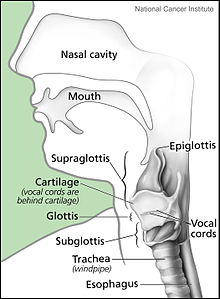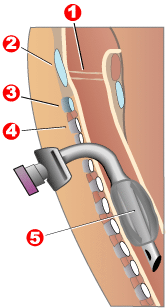A transient ischemic attack (TIA) is a brief episode of neurological dysfunction caused by loss of blood flow (ischemia) in the brain, spinal cord, or retina, without tissue death (infarction). TIAs have the same underlying mechanism as ischemic strokes. Both are caused by a disruption in blood flow to the brain, or cerebral blood flow (CBF). The definition of TIA was classically based on duration of neurological symptoms. The current widely-accepted definition is called "tissue-based" because it is based on imaging, not time. The American Heart Association and the American Stroke Association (AHA/ASA) now define TIA as a brief episode of neurological dysfunction with a vascular cause, with clinical symptoms typically lasting less than one hour, and without evidence of infarction on imaging.

Aortic stenosis is the narrowing of the exit of the left ventricle of the heart, such that problems result. It may occur at the aortic valve as well as above and below this level. It typically gets worse over time. Symptoms often come on gradually with a decreased ability to exercise often occurring first. If heart failure, loss of consciousness, or heart related chest pain occurs due to AS the outcomes are worse. Loss of consciousness typically occurs with standing or exercise. Signs of heart failure include shortness of breath especially when lying down, at night, or with exercise, and swelling of the legs. Thickening of the valve without narrowing is known as aortic sclerosis.

Heart murmurs are heart sounds produced when blood flows across one of the heart valves that are loud enough to be heard with a stethoscope.
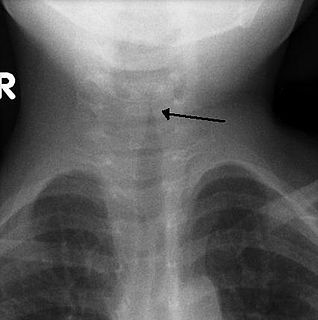
Croup, also known as laryngotracheobronchitis, is a type of respiratory infection that is usually caused by a virus. The infection leads to swelling inside the trachea, which interferes with normal breathing and produces the classic symptoms of "barking" cough, stridor, and a hoarse voice. Fever and runny nose may also be present. These symptoms may be mild, moderate, or severe. Often it starts or is worse at night. It normally lasts one to two days.

Laryngeal cancer are mostly squamous cell carcinomas, reflecting their origin from the skin of the larynx.

Mitral stenosis is a valvular heart disease characterized by the narrowing of the orifice of the mitral valve of the heart.

Lumbar spinal stenosis (LSS) is a medical condition in which the spinal canal narrows and compresses the nerves at the level of the lumbar vertebrae. This is usually due to the common occurrence of spinal degeneration that occurs with aging. It can also sometimes be caused by spinal disc herniation, osteoporosis, a tumor, or trauma. In the cervical (neck) and lumbar region, it can be a congenital condition to varying degrees.
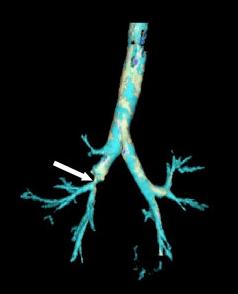
A stenosis is an abnormal narrowing in a blood vessel or other tubular organ or structure. It is also sometimes called a stricture.

Pyloric stenosis is a narrowing of the opening from the stomach to the first part of the small intestine. Symptoms include projectile vomiting without the presence of bile. This most often occurs after the baby is fed. The typical age that symptoms become obvious is two to twelve weeks old.
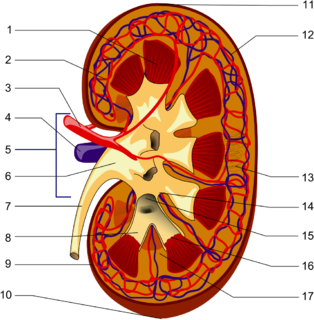
Renal artery stenosis is the narrowing of one of the renal arteries, most often caused by atherosclerosis or fibromuscular dysplasia. This narrowing of the renal artery can impede blood flow to the target kidney, resulting in renovascular hypertension – a secondary type of high blood pressure. Possible complications of renal artery stenosis are chronic kidney disease and coronary artery disease.
Stridor is a high-pitched breath sound resulting from turbulent air flow in the larynx or lower in the bronchial tree. It is different from a stertor which is a noise originating in the pharynx. Stridor is a physical sign which is caused by a narrowed or obstructed airway. It can be inspiratory, expiratory or biphasic, although it is usually heard during inspiration. Inspiratory stridor often occurs in children with croup. It may be indicative of serious airway obstruction from severe conditions such as epiglottitis, a foreign body lodged in the airway, or a laryngeal tumor. Stridor should always command attention to establish its cause. Visualization of the airway by medical experts equipped to control the airway may be needed.

Carotid artery stenosis is a narrowing or constriction of any part of the carotid arteries, usually caused by atherosclerosis.

Pulmonary valve stenosis (PVS) is a heart valve disorder. Blood going from the heart to the lungs goes through the pulmonary valve, whose purpose is to prevent blood from flowing back to the heart. In pulmonary valve stenosis this opening is too narrow, leading to a reduction of flow of blood to the lungs.

Laryngotracheal stenosis refers to abnormal narrowing of the central air passageways. This can occur at the level of the larynx, trachea, carina or main bronchi. In a small number of patients narrowing may be present in more than one anatomical location.

Spinal decompression is a surgical procedure intended to relieve pressure on the spinal cord or on one or more compressed nerve roots passing through or exiting the spinal column. Decompression of the spinal neural elements is a key component in treating spinal radiculopathy, myelopathy and claudication.
A cricoidectomy is the surgical excision of the cricoid cartilage. The excision can often be performed under local anaesthetic and can either be partial or total. The procedure may be necessary as a treatment of pulmonary aspiration, to prevent progression to aspiration pneumonia. As the cricoid cartilage is the narrowest part of the trachea, it is also a common point of a blockage or narrowing (stenosis).

Spinal stenosis is an abnormal narrowing of the spinal canal or neural foramen that results in pressure on the spinal cord or nerve roots. Symptoms may include pain, numbness, or weakness in the arms or legs. Symptoms are typically gradual in onset and improve with bending forwards. Severe symptoms may include loss of bladder control, loss of bowel control, or sexual dysfunction.
Laryngotracheal reconstruction is a surgical procedure that involves expanding or removing parts of the airway to widen a narrowing within it, called laryngotracheal stenosis or subglottic stenosis.
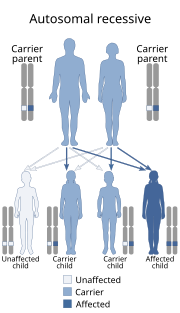
This is a rare condition charaterised by facial and skeletal abnormalities.
